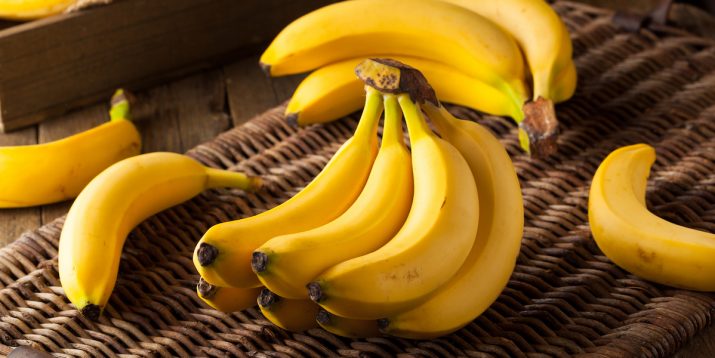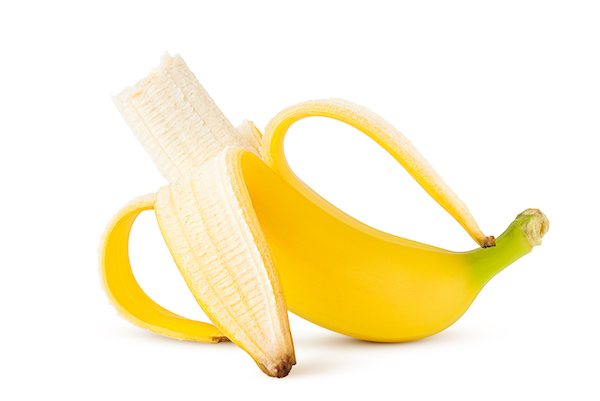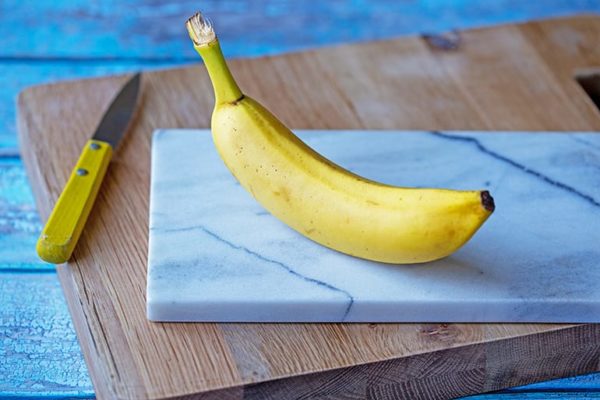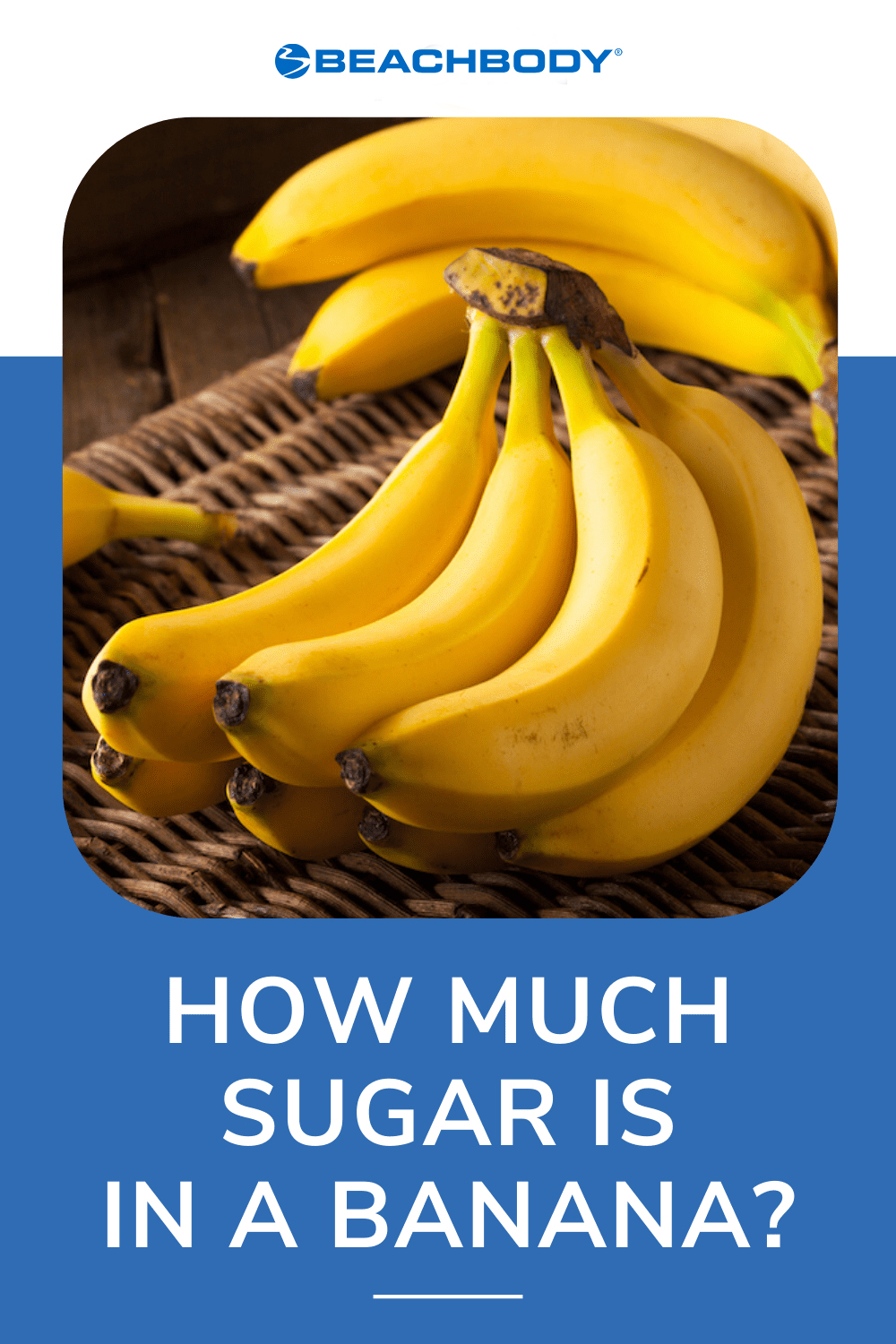How Much Sugar Is in a Banana and Is It Bad for You?

Bananas are the most popular fresh fruit in the United States — and for good reason. They’re portable, tasty, and have many nutrients like potassium, vitamin B6, vitamin C, magnesium, copper, and fiber. But many people get hung up on the question of the fruit’s nutrition, especially how much sugar is in a banana.
Each medium banana provides 105 calories and 27 grams of carbs, including about 14 grams of fruit sugars. It’s that sugar — naturally found in bananas — that makes some people question whether they should swap out these beloved fruits. But before you sour on bananas, let’s look at their nutrition content in more detail.
How Many Grams of Sugar Are in One Banana?
The amount of sugar depends on the size of the fruit:
- There are 14.4 grams of sugar in one medium banana
- An extra-large banana has 18.6 grams of sugar
- An extra-small banana has 9.9 grams of sugar
All of this sugar is naturally occurring — so don’t lump it in with the processed sugars found in foods like regular sodas, cakes, and candies. Sugar from fruit is “better than any refined sugar, because it’s a whole food that comes with nutrients and fiber, which helps regulate blood sugar,” says Keri Glassman, MS, RD, CDN. That doesn’t mean you can eat fruit all day long — it’s still possible to overindulge, Glassman notes — but our bodies are well equipped to handle the natural sugar in a banana and other types of fruit.
“We should not not have bananas because they have sugar in them,” adds Andrea N. Giancoli, MPH, RD, registered dietitian. “That’s how we’re intended to have sugar in food — versus as added sugars which are often ultra-processed foods. Don’t shun fruit because it has natural sugars. It should be a part of a healthful diet.”
Bananas also have “lots of different nutrients in the banana that our bodies are designed to digest and utilize,” Giancoli says. Bananas can be a good source of potassium, a “nutrient of concern” (a.k.a. a nutrient we don’t get enough of), according to the USDA 2015-2020 Dietary Guidelines for Americans.
A large banana contains 487 mg of potassium. While there’s 905 mg of the essential mineral in a medium potato, “Americans eat a lot of bananas so they do lend a meaningful amount of potassium to our diets,” explains Giancoli.
Do Ripe Bananas Have More Sugar?

If you’ve ever eaten a slightly green banana or one that’s brown and mushy, you know there is a difference in how bananas taste based on their color. That is due to the natural ripening process.
“As a banana ripens, some of its starch turns to sugar,” says Giancoli. “The more ripe it is, the more sugar it’s going to have in it and the less resistant starch and more pectin you’re going to get.”
But, she reiterates that it’s imperative to remember those are naturally occurring sugars — and the sugar in fruit is not “bad” for you. If you prefer the taste and texture of bananas when they are less ripe, eat them when they are a little green. But if you like them sweeter and softer, there’s no reason to pass over a ripe banana as part of your healthy diet. You can even use ripe bananas in place of added sugars in foods like yogurt, oatmeal, and baked goods.
“When you need a sweet treat, snap off half, let it thaw a minute, blend it — and prepare for guiltless custardy goodness,” says Michele Promaulayko, author of Sugar Free 3. “I also like to smear fresh slices with nut butter.”
Are Bananas OK for People With Diabetes to Eat?

“Bananas definitely can be part of a healthful diet for someone who’s trying to manage their blood sugar,” says Giancoli. “They’re not that high on the glycemic index because of the resistant starch and pectin that dampen that blood sugar rise.”
First and foremost, if you have diabetes or you’re pre-diabetic, you need to follow your healthcare provider’s instructions when it comes to diet, but for the most part, those living with diabetes “should be eating a healthful diet that ought to include fruits” like bananas — if that’s a fruit they like to eat, says Giancoli.
Which Fruit Is Highest in Sugar?
Dates are among the sweetest fruits, says Giancoli. One medjool date contains 16 grams of sugar.
While a single date contains a similar amount of sugar as banana, “You get a lot more from a banana, including more to eat,” she adds. “A banana is more nutrient-dense than a date in comparison.”
Which Fruit Has the Least Sugar?
On the flip side, grapefruit scores lowest among fruits on the glycemic index, following closely by peaches. Technically, unripe (green) jackfruit contains less than 2 grams of sugar per 100-gram serving, but it’s usually not eaten as a fruit (but as a vegan meat swap). However, when a jackfruit ripens, it contains nearly 10 times as much sugar at 19 grams per 100-gram serving.

